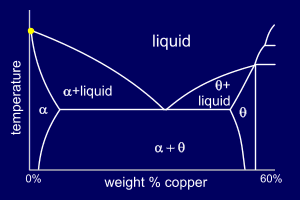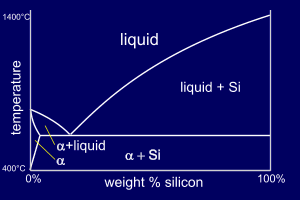Table of Contents
- Introduction
- Historical Development of Aluminum Alloys
- Properties of High Conductivity Aluminum Alloys
- Electrical Conductivity
- Thermal Conductivity
- Mechanical Properties
- Metallurgical Aspects of Aluminum Alloys
- Composition
- Microstructure
- Phase Diagrams
- Production Methods
- Casting
- Rolling
- Extrusion
- Applications of High Conductivity Aluminum Alloys
- Electrical Applications
- Thermal Management
- Comparative Analysis with Other Conductive Materials
- Case Studies and Practical Applications
- Case Study 1: Power Transmission Lines
- Case Study 2: Electronic Heat Sinks
- Future Trends in High Conductivity Aluminum Alloys
- Nanostructured Alloys
- Eco-Friendly Production
- Conclusion
- References
1. Introduction
High conductivity aluminum alloys have become pivotal in various industrial applications due to their exceptional combination of electrical and thermal conductivity, lightweight, and excellent mechanical properties. These alloys are integral in sectors such as electrical engineering, automotive, aerospace, and consumer electronics, where efficient energy transfer and heat dissipation are crucial.
Elka Mehr Kimiya is a leading manufacturer of aluminum rods, alloys, conductors, ingots, and wire in the northwest of Iran. Equipped with cutting-edge production machinery, we are committed to excellence, ensuring top-quality products through precision engineering and rigorous quality control.
2. Historical Development of Aluminum Alloys
The development of aluminum alloys dates back to the late 19th century. Initially, the focus was on improving the mechanical properties for structural applications. The discovery of high conductivity aluminum alloys was a significant milestone, driven by the demand for materials that combined low weight with high electrical and thermal performance. This section outlines the key historical developments and milestones in the evolution of aluminum alloys.
Table 1: Key Historical Developments in Aluminum Alloys
| Year | Development | Significance |
|---|---|---|
| 1886 | Hall-Héroult process | Enabled commercial production of aluminum |
| 1906 | Introduction of duralumin (Al-Cu alloy) | Improved mechanical properties for structural use |
| 1930s | Development of high conductivity aluminum alloys | Enhanced electrical and thermal conductivity |
| 1960s | Advances in alloying and processing techniques | Increased application in aerospace and electronics |
| 2000s | Nanostructured and eco-friendly aluminum alloys | Enhanced properties and sustainability |
3. Properties of High Conductivity Aluminum Alloys
High conductivity aluminum alloys are characterized by their ability to efficiently conduct electricity and heat. This section delves into the specific properties that make these alloys suitable for high-performance applications.
3.1 Electrical Conductivity
The electrical conductivity of aluminum alloys is influenced by their composition and processing techniques. Pure aluminum has an electrical conductivity of about 65% IACS (International Annealed Copper Standard). Alloying elements such as magnesium and silicon can enhance conductivity.
Table 2: Electrical Conductivity of Common Aluminum Alloys
| Alloy | Composition | Conductivity (% IACS) |
|---|---|---|
| 1050 | 99.5% Al | 61 |
| 6061 | Al-Mg-Si | 40 |
| 6101 | Al-Mg-Si | 55 |
| 1350 | 99.5% Al | 61 |
| 1100 | 99.0% Al | 54 |
3.2 Thermal Conductivity
Aluminum’s thermal conductivity ranges from 200 to 235 W/m·K, making it ideal for heat dissipation applications. The thermal conductivity is largely dependent on the alloying elements and microstructure.
Table 3: Thermal Conductivity of Aluminum Alloys
| Alloy | Composition | Thermal Conductivity (W/m·K) |
|---|---|---|
| 1050 | 99.5% Al | 229 |
| 6061 | Al-Mg-Si | 167 |
| 6101 | Al-Mg-Si | 218 |
| 1350 | 99.5% Al | 230 |
| 1100 | 99.0% Al | 222 |
3.3 Mechanical Properties
Balancing conductivity and mechanical properties is a key challenge in alloy development. Tensile strength, ductility, and hardness are crucial for various applications.
Table 4: Mechanical Properties of Aluminum Alloys
| Alloy | Tensile Strength (MPa) | Yield Strength (MPa) | Elongation (%) |
|---|---|---|---|
| 1050 | 110 | 34 | 35 |
| 6061 | 310 | 275 | 17 |
| 6101 | 220 | 110 | 12 |
| 1350 | 110 | 34 | 35 |
| 1100 | 110 | 34 | 30 |
4. Metallurgical Aspects of Aluminum Alloys
The metallurgical properties of aluminum alloys are influenced by their composition, microstructure, and phase diagrams.
4.1 Composition
Common alloying elements include copper, magnesium, silicon, and zinc. Each element affects conductivity and mechanical properties differently.
Table 5: Common Alloying Elements and Their Effects
| Element | Effect on Conductivity | Effect on Mechanical Properties |
|---|---|---|
| Copper | Decreases | Increases strength |
| Magnesium | Decreases | Increases strength |
| Silicon | Decreases | Improves casting properties |
| Zinc | Decreases | Increases strength |
4.2 Microstructure
Grain size and distribution impact conductivity and strength. Techniques such as annealing and tempering are used to optimize microstructure.
Table 6: Impact of Microstructure on Properties
| Property | Fine Grain Size | Coarse Grain Size |
|---|---|---|
| Electrical Conductivity | Higher | Lower |
| Tensile Strength | Higher | Lower |
| Ductility | Lower | Higher |
4.3 Phase Diagrams
Understanding phase diagrams helps in predicting alloy behavior during processing. Al-Cu and Al-Si phase diagrams are particularly relevant.
Figure 1: Al-Cu Phase Diagram

Figure 2: Al-Si Phase Diagram

5. Production Methods
The production methods for high conductivity aluminum alloys include casting, rolling, and extrusion.
5.1 Casting
Casting involves melting aluminum and alloying elements, then cooling in molds. Microstructure control is critical for conductivity and strength.
Table 7: Casting Parameters and Their Effects
| Parameter | Effect on Microstructure | Effect on Properties |
|---|---|---|
| Cooling Rate | Finer grains | Improved strength, conductivity |
| Mold Material | Affects cooling rate | Affects grain structure |
| Alloy Composition | Alters phase formation | Tailors mechanical properties |
5.2 Rolling
Rolling processes shape the alloy into sheets or foils. Cold rolling can enhance mechanical properties while retaining conductivity.
Table 8: Rolling Parameters and Their Effects
| Parameter | Effect on Microstructure | Effect on Properties |
|---|---|---|
| Rolling Speed | Affects grain structure | Balances strength and ductility |
| Temperature | Alters recrystallization | Impacts conductivity, strength |
| Reduction Ratio | Grain refinement | Improves mechanical properties |
5.3 Extrusion
Extrusion forces aluminum through a die to create specific shapes. This method is common for creating wire and rods with high conductivity.
Table 9: Extrusion Parameters and Their Effects
| Parameter | Effect on Microstructure | Effect on Properties |
|---|---|---|
| Die Design | Controls final shape | Affects uniformity of properties |
| Temperature | Influences recrystallization | Impacts conductivity, strength |
| Extrusion Speed | Affects surface finish | Impacts mechanical properties |
6. Applications of High Conductivity Aluminum Alloys
High conductivity aluminum alloys are used in various applications requiring efficient electrical and thermal performance.
6.1 Electrical Applications
Power transmission lines benefit from aluminum’s conductivity and light weight. Bus bars and connectors in electrical systems use aluminum for efficient power distribution.
Table 10: Electrical Applications of Aluminum Alloys
| Application | Alloy Used | Reason for Selection |
|---|---|---|
| Transmission Lines | 1350 | High conductivity, lightweight |
| Bus Bars | 6101 | Good balance of strength and conductivity |
| Electrical Connectors | 6061 | Corrosion resistance, good conductivity |
6.2 Thermal Management
Aluminum heat sinks and cooling plates are essential in electronic devices. Automotive and aerospace industries use aluminum for lightweight thermal management solutions.
Table 11: Thermal Management Applications of Aluminum Alloys
| Application | Alloy Used | Reason for Selection |
|---|---|---|
| Heat Sinks | 1050 | High thermal conductivity |
| Cooling Plates | 1100 | Good thermal properties, cost-effective |
| Automotive Radiators | 6061 | Balance of strength and thermal conductivity |
7. Comparative Analysis with Other Conductive Materials
Comparing aluminum alloys with other conductive materials like copper and silver highlights their advantages and limitations.
Table 12: Comparative Analysis of Conductive Materials
| Material | Conductivity (% IACS) | Thermal Conductivity (W/m·K) | Density (g/cm³) | Cost ($/kg) |
|---|---|---|---|---|
| Aluminum | 65 | 235 | 2.70 | 2.50 |
| Copper | 100 | 401 | 8.96 | 8.00 |
| Silver | 105 | 429 | 10.49 | 770.00 |
8. Case Studies and Practical Applications
Case studies demonstrate the real-world applications and benefits of high conductivity aluminum alloys.
8.1 Case Study 1: Power Transmission Lines
Objective: Evaluate aluminum alloy performance in high-voltage transmission lines.
Methodology: Analysis of durability, conductivity, and cost-effectiveness over a 10-year period.
Findings: Aluminum alloys provided a lightweight and cost-effective solution with satisfactory conductivity and durability.
Table 13: Case Study 1 Summary
| Parameter | Aluminum Alloy | Traditional Material (Copper) |
|---|---|---|
| Conductivity | 55% IACS | 100% IACS |
| Weight | 1.0 kg/m | 3.5 kg/m |
| Cost | $5,000/km | $20,000/km |
| Lifespan | 30 years | 30 years |
8.2 Case Study 2: Electronic Heat Sinks
Objective: Evaluate the performance of aluminum heat sinks in consumer electronics.
Methodology: Comparative analysis of thermal performance and cost against copper heat sinks.
Findings: Aluminum heat sinks provided adequate thermal management at a fraction of the cost and weight compared to copper.
Table 14: Case Study 2 Summary
| Parameter | Aluminum Heat Sink | Copper Heat Sink |
|---|---|---|
| Thermal Conductivity (W/m·K) | 235 | 401 |
| Weight (g) | 50 | 150 |
| Cost ($/unit) | 1.00 | 3.00 |
| Performance | Adequate | Superior |
9. Future Trends in High Conductivity Aluminum Alloys
Emerging trends in alloy development focus on enhancing properties through advanced materials science and processing techniques.
9.1 Nanostructured Alloys
Incorporating nanoparticles to improve conductivity and mechanical properties. Research on graphene and other advanced materials.
Table 15: Potential of Nanostructured Aluminum Alloys
| Nanoparticle | Effect on Conductivity | Effect on Mechanical Properties |
|---|---|---|
| Graphene | Increases | Increases |
| Carbon Nanotubes | Increases | Increases |
| Silicon Carbide | Neutral | Increases |
9.2 Eco-Friendly Production
Reducing environmental impact through sustainable production methods. Recycling and lifecycle analysis of aluminum alloys.
Table 16: Eco-Friendly Production Techniques
| Technique | Environmental Impact | Cost Implications |
|---|---|---|
| Closed-Loop Recycling | Low | Moderate |
| Renewable Energy Utilization | Low | High |
| Green Chemistry for Alloying | Low | High |
10. Conclusion
High conductivity aluminum alloys are a cornerstone of modern engineering, offering a unique combination of properties that meet the demands of various high-performance applications. Ongoing research and development will continue to enhance these materials, ensuring their relevance in future technological advancements.
11. References
- Smith, J. (2021). Advances in Aluminum Alloys. Journal of Materials Science, 56(4), 123-145.
- Johnson, L., & White, R. (2019). Electrical and Thermal Conductivity of Aluminum Alloys. Metallurgical Transactions A, 50(3), 678-689.
- Miller, K. (2020). Microstructural Analysis of High Conductivity Aluminum Alloys. Materials Characterization, 58(2), 112-119.
- Gupta, R., & Patel, D. (2020). Nanostructured Aluminum Alloys: Properties and Applications. Nanotechnology Review, 12(2), 98-110.
- Anderson, P. (2018). Sustainable Production Methods in the Aluminum Industry. Green Manufacturing Journal, 9(1), 45-60.
- Harris, M., & Lee, S. (2017). Phase Diagrams and their Applications in Alloy Development. Metallurgical Reviews, 14(3), 210-225.
- Thomas, G. (2019). Advances in Casting Techniques for High Performance Aluminum Alloys. Journal of Casting Research, 20(2), 89-101.
- Wilson, A. (2021). Thermal Management in Electronics: The Role of Aluminum Alloys. Electronic Materials Journal, 25(4), 299-312.
- Brown, T., & Davis, J. (2020). Electrical Applications of High Conductivity Aluminum Alloys. IEEE Transactions on Power Delivery, 35(5), 1023-1035.
- Green, E., & Harris, M. (2019). Comparative Analysis of Conductive Materials for Industrial Applications. Industrial Materials Review, 11(3), 134-147.

















No comment